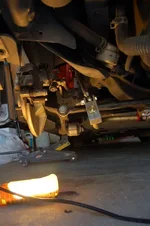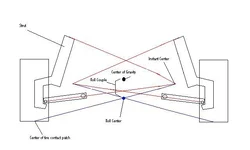Alright, I read an article a while back that discussed lowering your car and the pros and cons. If anyone is interested it is in the August 2005 Sport Compact Car issue the article is "Making it Stick: Tweaking roll center, roll axis and steering geometry". Anyway I learned a lot and figured there may be some of us that would enjoy discussing this topic, especially the roll center and roll axis topics.
Basically it states that geometry of our suspensions when lowered obviously lowers the center of gravity (CG) which is a benefit, but it lowers the roll center (RC) (point at which the car pivots when rolling) much more then the CG, therefore lengthening the roll couple (RC) (difference between the two) and therefore basically enduces more lean towards the outside in a turn, decreasing inner tire grip as well as other things.
I just got my first Protege not too long ago after numerous ford probes (basically mazda mx6s) and would like to discuss this to figure out how to lower my car while maintaining the most available grip though turns by all my tires or even increasing it. The article states that adjustment of links on the control arm could fix or even improve this action.
Anyway, something interesting to discuss I thought.
Basically it states that geometry of our suspensions when lowered obviously lowers the center of gravity (CG) which is a benefit, but it lowers the roll center (RC) (point at which the car pivots when rolling) much more then the CG, therefore lengthening the roll couple (RC) (difference between the two) and therefore basically enduces more lean towards the outside in a turn, decreasing inner tire grip as well as other things.
I just got my first Protege not too long ago after numerous ford probes (basically mazda mx6s) and would like to discuss this to figure out how to lower my car while maintaining the most available grip though turns by all my tires or even increasing it. The article states that adjustment of links on the control arm could fix or even improve this action.
Anyway, something interesting to discuss I thought.
Last edited:



